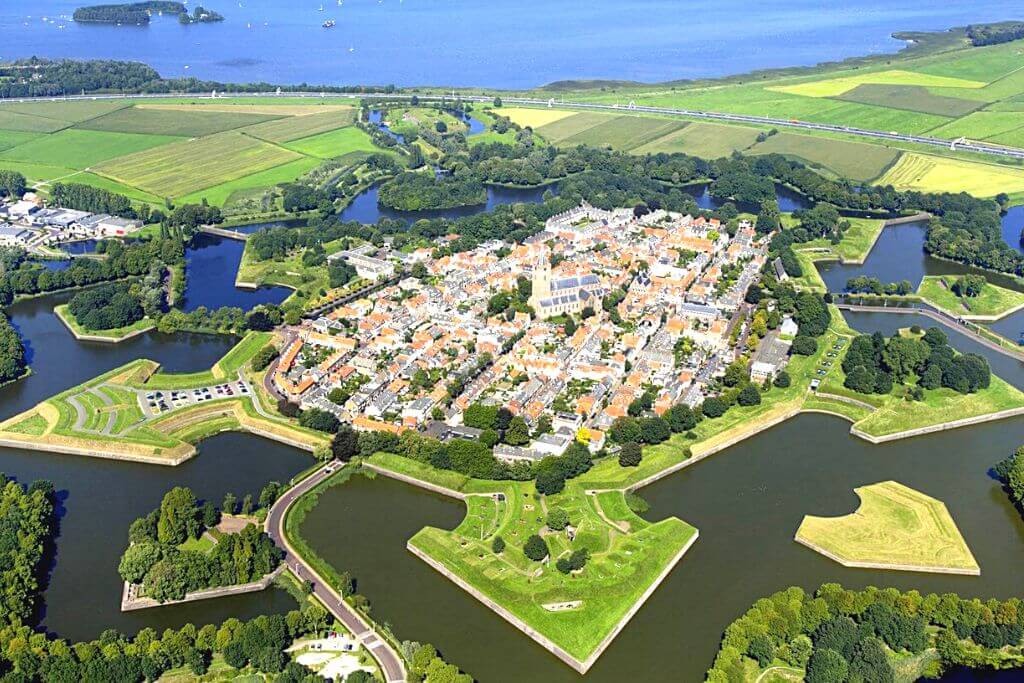Some of Europe’s most attractive cities can be found in the Netherlands, a stunning nation. This tiny nation never ceases to astound both residents and visitors, from the stunning canals and cathedrals in Amsterdam, Volendam, and Haarlem to the cutting-edge modern architecture in Rotterdam and other towns. Naarden is one of these charming towns. A city in the North Holland province that is close to Amsterdam. Here are all you need to know before visiting “Naarden Vesting.”
“Naarden Vesting”: One Of The Best Preserved Fortified Towns In Europe
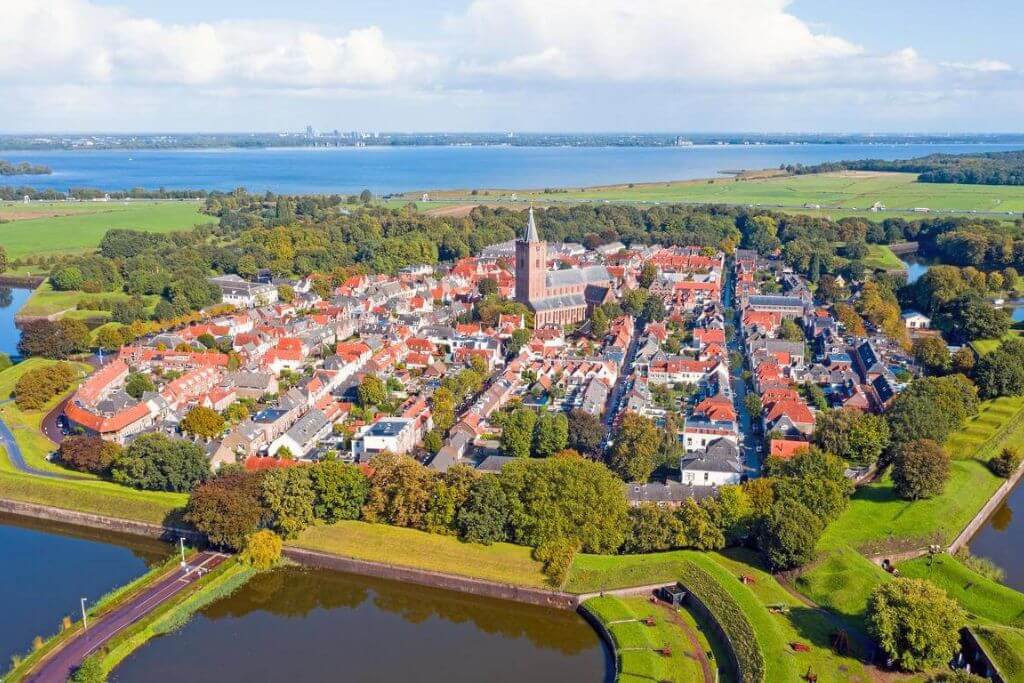
“Naarden Vesting” in Dutch means Naarden Fortress. Naarden is a component of the 135-kilometer-long medieval Defense Line of Amsterdam, a ring of fortifications encircling the city. One of the most amazing instances of a fortified town in Europe, with its classical town center still surrounded by two complex star-shaped moats and stone walls, is a completely preserved piece of Dutch defensive history.
History Of The City
Since Naarden is the only city in the Gooi, it has had city rights since 1351. Naarden was a military fortification and a part of the Dutch Waterline in the 16th century as a result of its advantageous location. It acquired it’s recognizable and exquisitely preserved star-shaped design with twin walls, gate structures, and bastions in the seventeenth century. Naarden can be compared to an open-air museum where everyone proudly displays their military heritage.
Although it is no longer a municipality in the Gooi areas, Naarden is the oldest town there, and, as of 2016, Goose Meren has the newest municipality. Anyone who goes for the first time will be awed by Naarden, one of the most stunning Dutch cities. A trip to the Dutch Fortress Museum is advised to understand more about the town’s stormy past.
Naarden’s Best Attractions
The Vestingmuseum Naarden
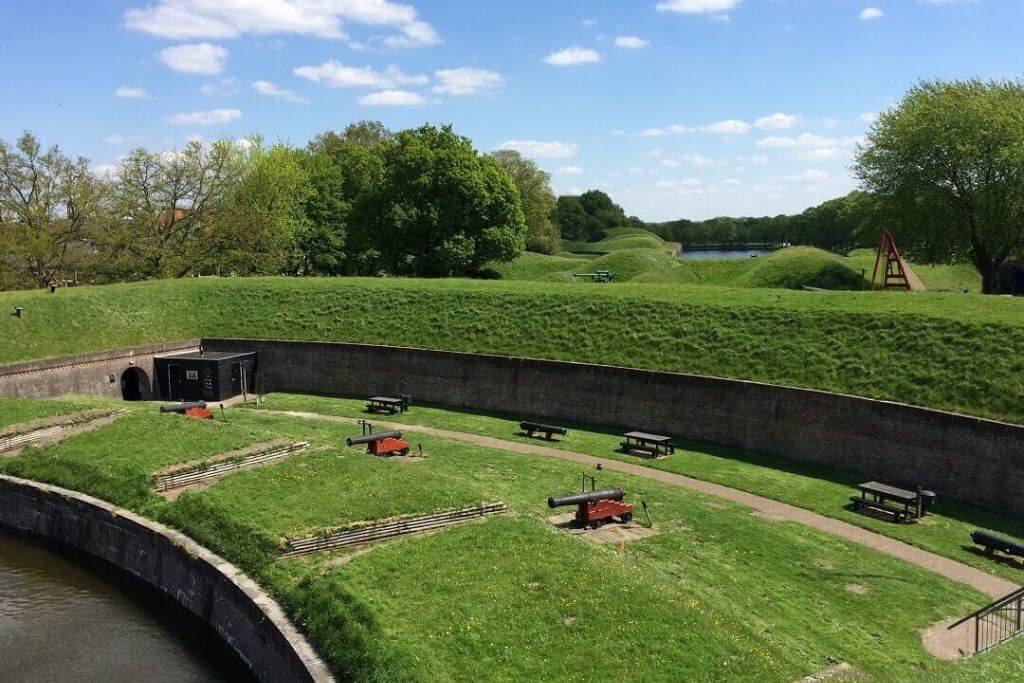
Have you ever wondered why the Naarden Fortress appears to be in the shape of a six-pointed star from above? Or are you interested in learning more about the past of the Dutch fortified towns? Then you ought to visit this museum without a doubt. In the Vestingmuseum, you may obtain a great understanding of the history of fortification, the city of Naarden as a fortified town, and the Dutch Waterlines. Naarden is a well-preserved walled town in the Netherlands.
In the Naarden citadel, which dates mostly from the 17th century, the Vestingmuseum is situated on the Bastion Turfpoort. The Vestingmuseum Naarden contains both a subterranean and an outdoor area. The underground area contains its collection of artifacts and provides insight into fortress soldier life.
The Comenius Museum
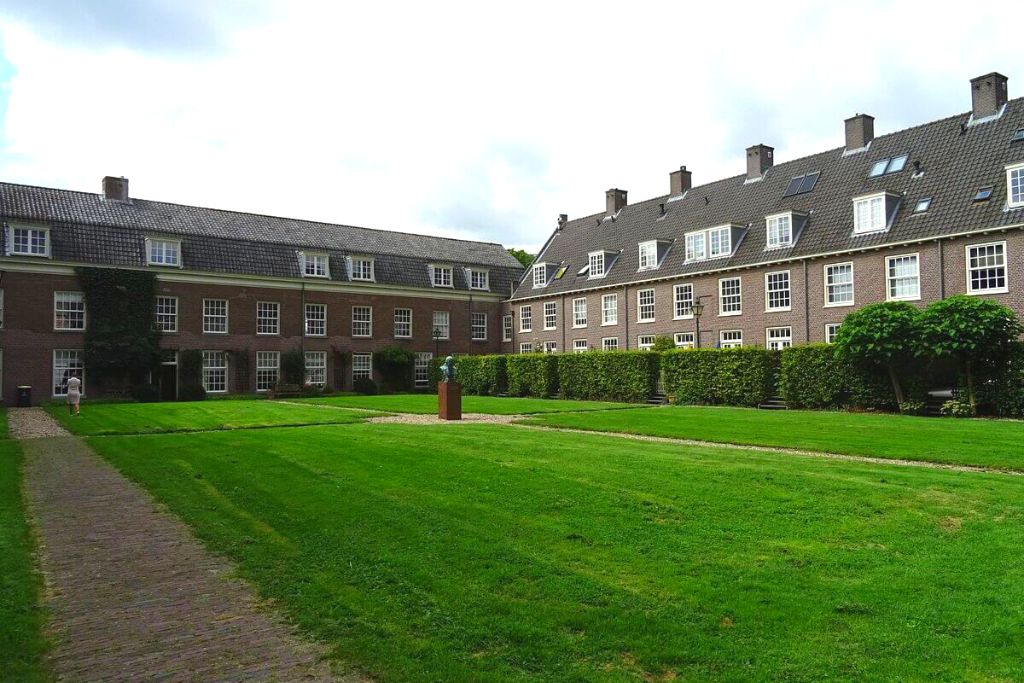
The renowned Czech scholar Jan Amos Comenius (1592-1670), who was buried in Naarden, is the subject of the Comenius Museum, which is devoted to his life and achievements. In the Naarden fortress’s former monastery, you may find Comenius’ museum and final resting place. The museum’s ongoing exhibit, “Vivat Comenius,” provides a summary of his life. There are books by and about Comenius in the library. In addition, the mausoleum where Comenius is interred is a national landmark.
Read more 10 Small Towns In The Netherlands Deserving of a Visit
Weegschaal Museum
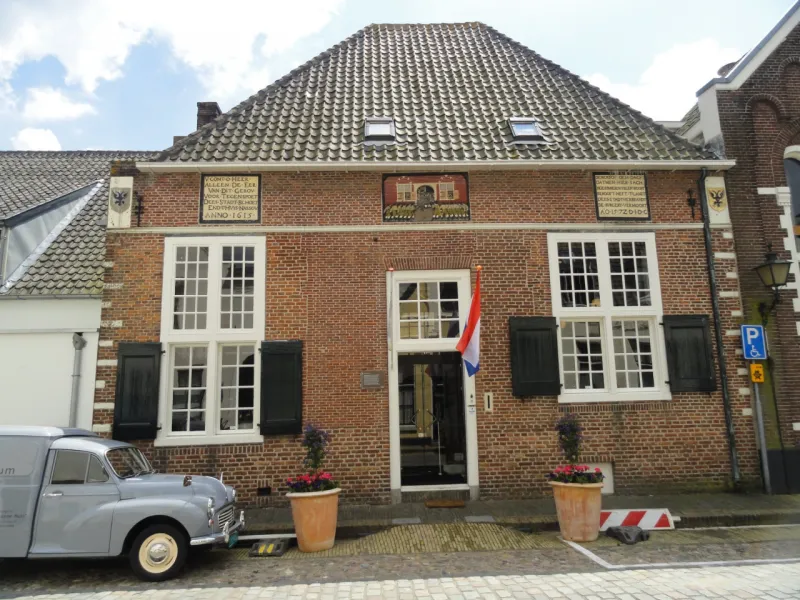
Have you ever wondered where the kilo or the meter came from? What does Napoleon have to do with calibrating, and what does it exactly mean? How is it possible that a kg is the same everywhere? On the moon, is a kg still a kilo? Perhaps the majority of us have never considered these questions when taking a shower.
You may learn a great deal about the aforementioned topics in Naarden’s Weegschaal Museum. When you visit the museum, you will learn about the origins of measuring and weighing as well as the various uses for these skills, including how they contributed to Dutch trade history and how they continue to do so now. Visitors learn about the history of measuring and weighing through a diverse collection of old scales and measuring tools.
Naarden’s Old City Hall
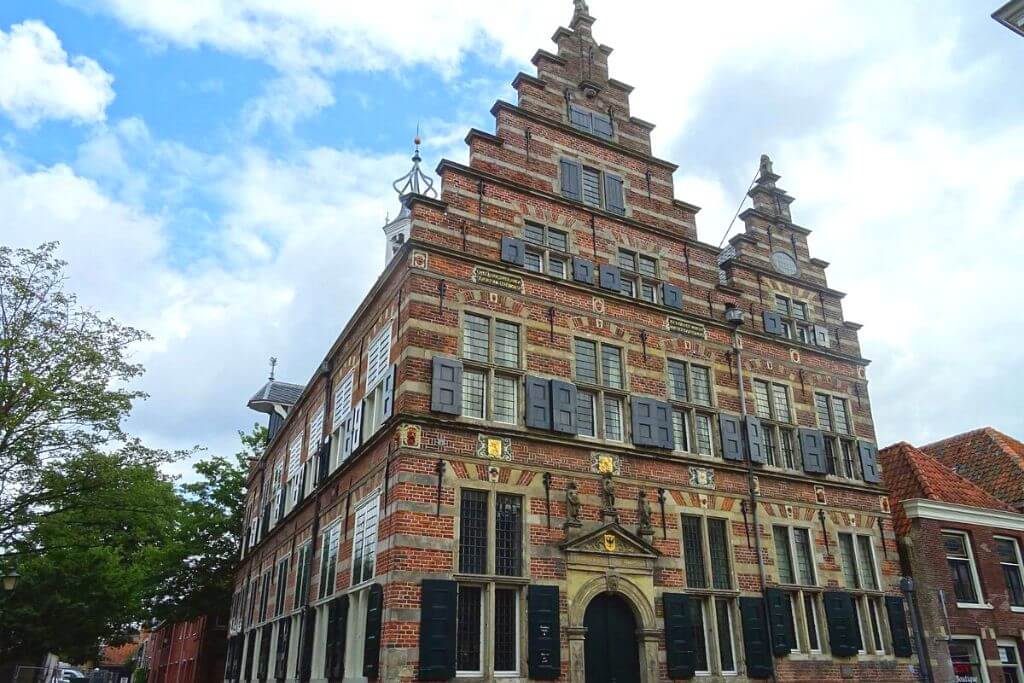
Naarden’s Old City Hall is still something to be proud of even after all these years. Dutch Renaissance architecture was used to construct the city hall in 1601. The word “Motherly Love” and the double-headed eagle, which serve as Naarden’s symbol as well as the insignias of Holland, Prins Maurits, and West-Friesland, are shown at the top of the stepped gable. Faith, Hope, and Love are shown as sculptured figures on the facade as well. From 31 March to 30 September, the City Hall is open to the public on Saturday and Sunday from 11 am to 5 pm.
Naarden’s Arsenaal (Arsenal)
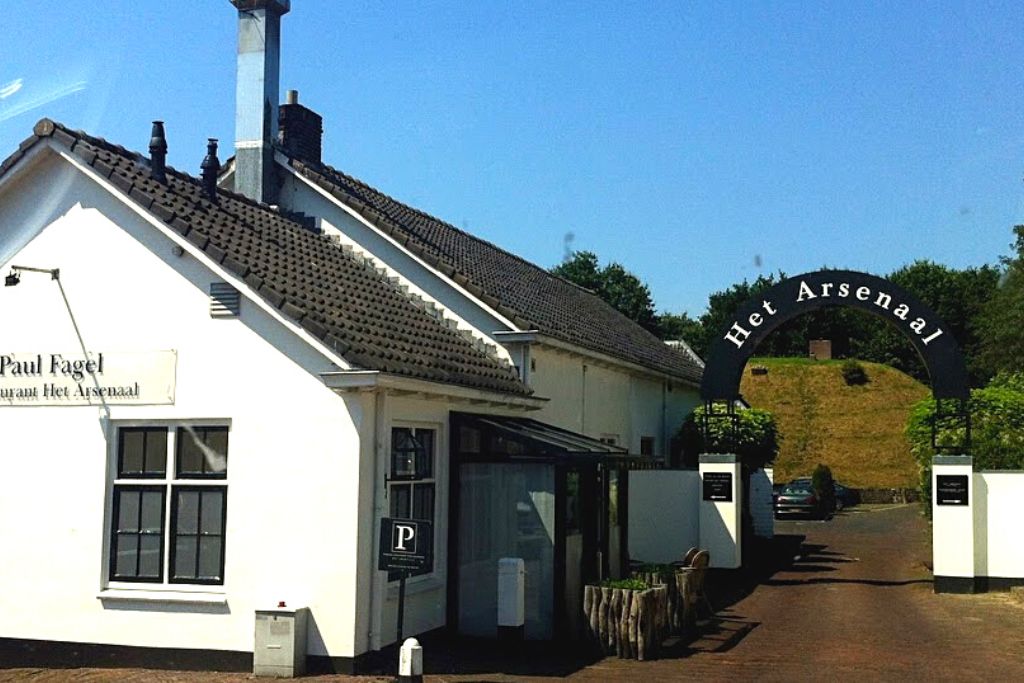
A historic arsenaal from 1688 is located in the walled town of Naarden in North Holland. It served as a storage facility for military hardware, particularly guns and ammo. It served as a hotel for the fortress’ infantry and the men from the adjoining military hospital during World War One. Naarden’s Arsenaal was once again used as a weapons room and a location to keep ammunition after the war. It was transformed into a military map depot in 1950.
The historical structure known as Naarden’s Arsenaal is well worth a visit. Jan des Bouvrie, a renowned interior architect from the Netherlands, established Het Arsenaal in the same grand structure more than twenty years ago to use it as a showroom for his creations. For information on gastronomic and interior design trends, visitors can stop by the showroom.
Het Spans Huis (The Spanish House)
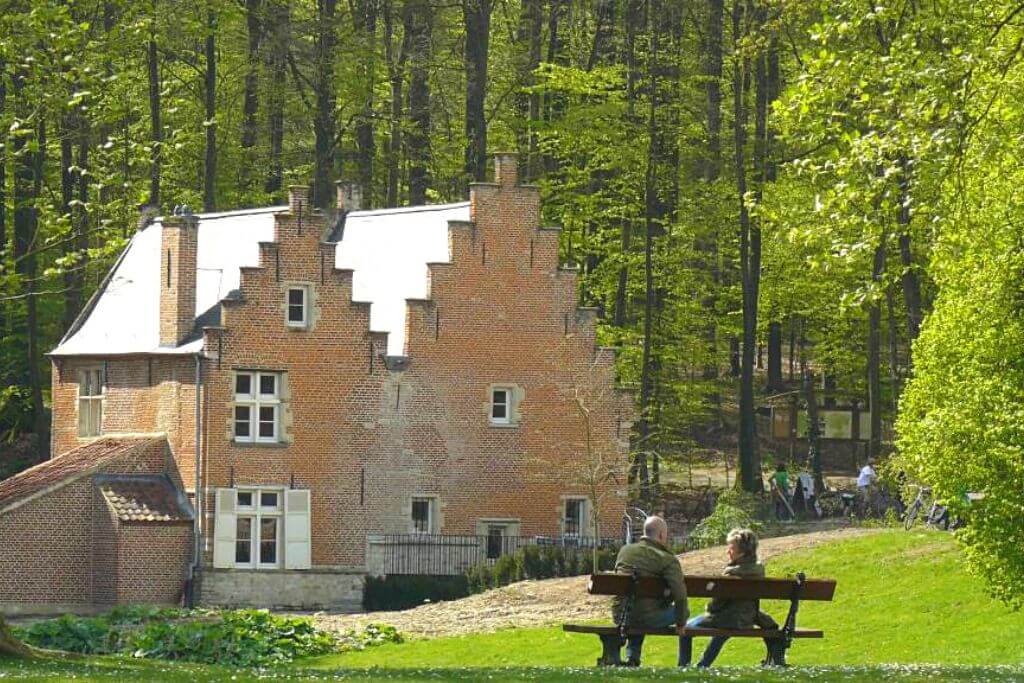
This old medieval structure is a significant historical landmark. Its nickname, the Spanish House, alludes to a 1572 incident in which Spanish troops massacred a sizeable portion of Naarden’s populace. The structure was transformed into a municipal hall around the 16th century.
The citizens of Naarden were killed by the Spanish army in this town hall in December 1572, at the start of the Eighty Years’ War. After the slaughter, the walled town was pillaged as well, and then Naarden was deliberately set on fire. This building was also destroyed by fire. Three façade stones that were added during the building’s reconstruction in 1615 and are still there now serve to perpetuate the remembrance of the tragedy.
Following repair, the structure was used as a weigh house for close to 200 years. For a price, traders weighed the things they planned to sell. The structure was given to the military authorities by the city in 1809, during the French era of administration, for the purpose of housing soldiers. It would become the military bakery four years later. The structure was equipped with two sizable ovens. Ovens still have some of their original components. Don’t overlook paying a visit to this historically significant house.
How To Get There
The A1 highway partially encircles Naarden, making it quite convenient to get there. Naarden is a city with a lot of bus stops and its own station, making public transportation a breeze. By train is the most convenient way to travel to the town. A 20-minute rail ride from Amsterdam Centraal Station to Naarden-Bussum will get you to Naarden from Amsterdam in around 30 minutes by automobile.
Through this article, we showed you some information and the best attractions in Naarden vesting. Please give your feedback by leaving a comment below!
Related post The 10 Best Real Dutch Villages You Have To See
